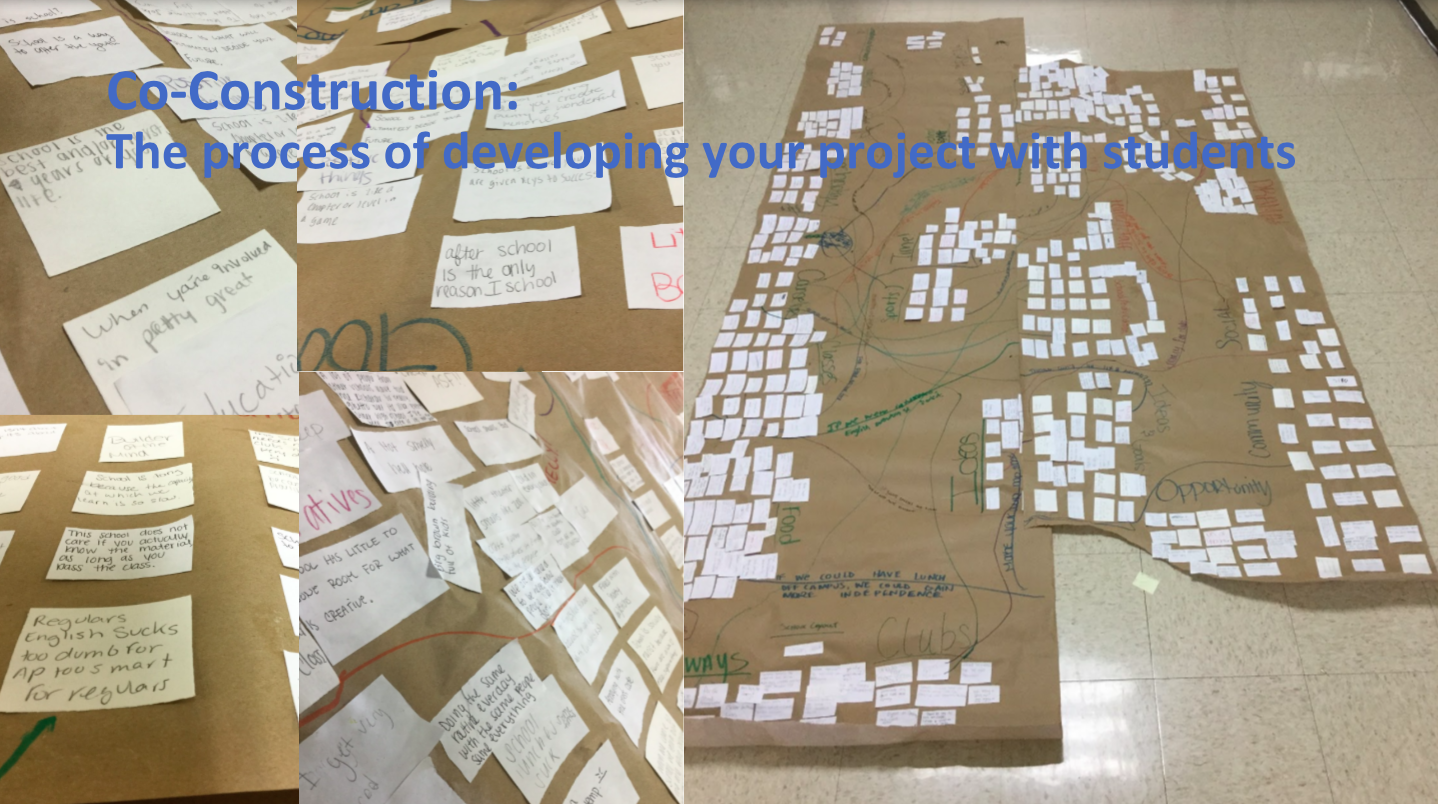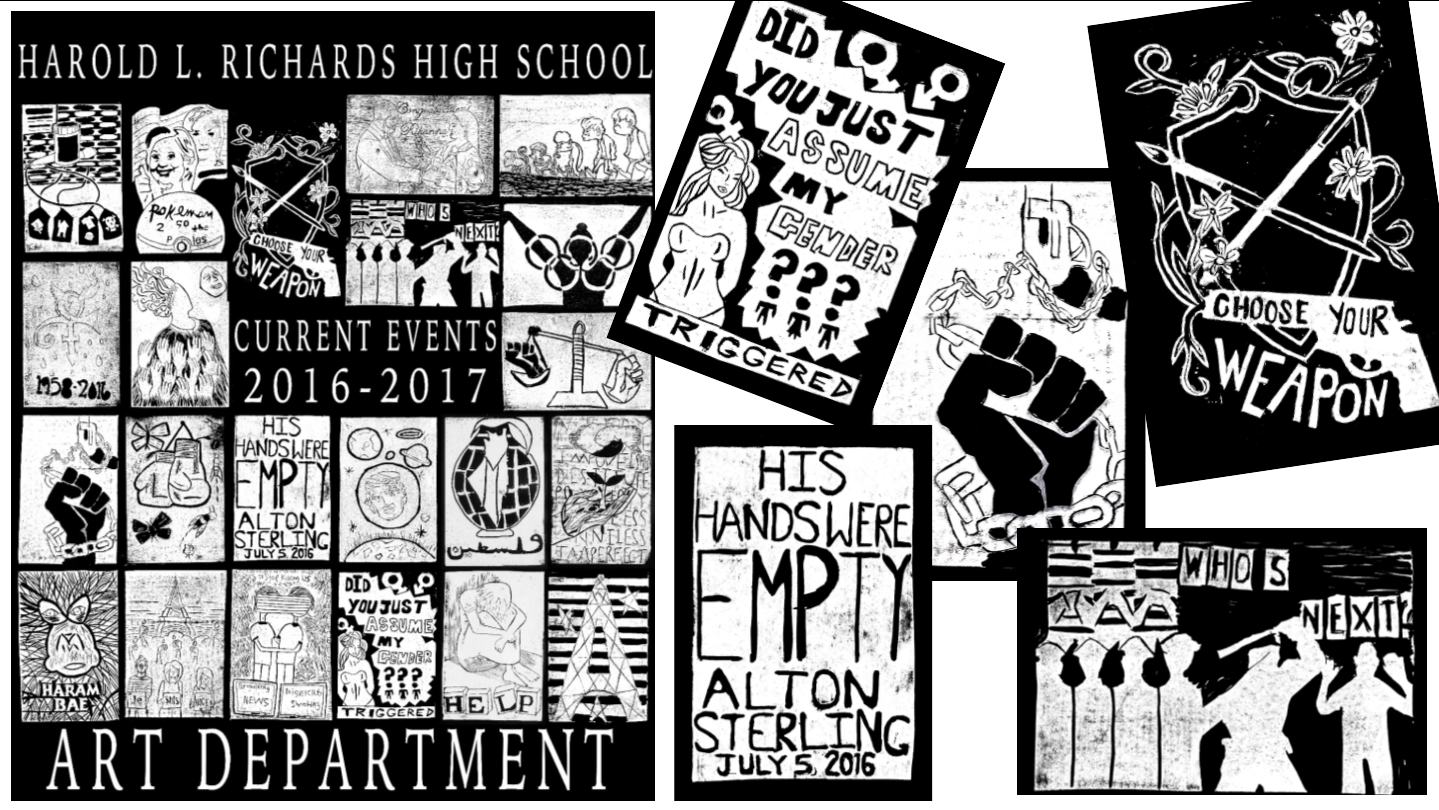
Protest is an important part of a healthy democracy and an important way that youth can communicate empowered and informed opinions on bettering civic life. What structures can support students in their work as they identify social issues that matter to them and communicate clear statements about those issues through interactive art? In this project, the teacher created a scaffolded sequence centered around identifying themes, undertaking artistic research and peer education, defining the qualities of socially-engaged art, conveying social ideas through images, deliberating on the process, and constructing an interactive installation to raise consciousness and build community at school.
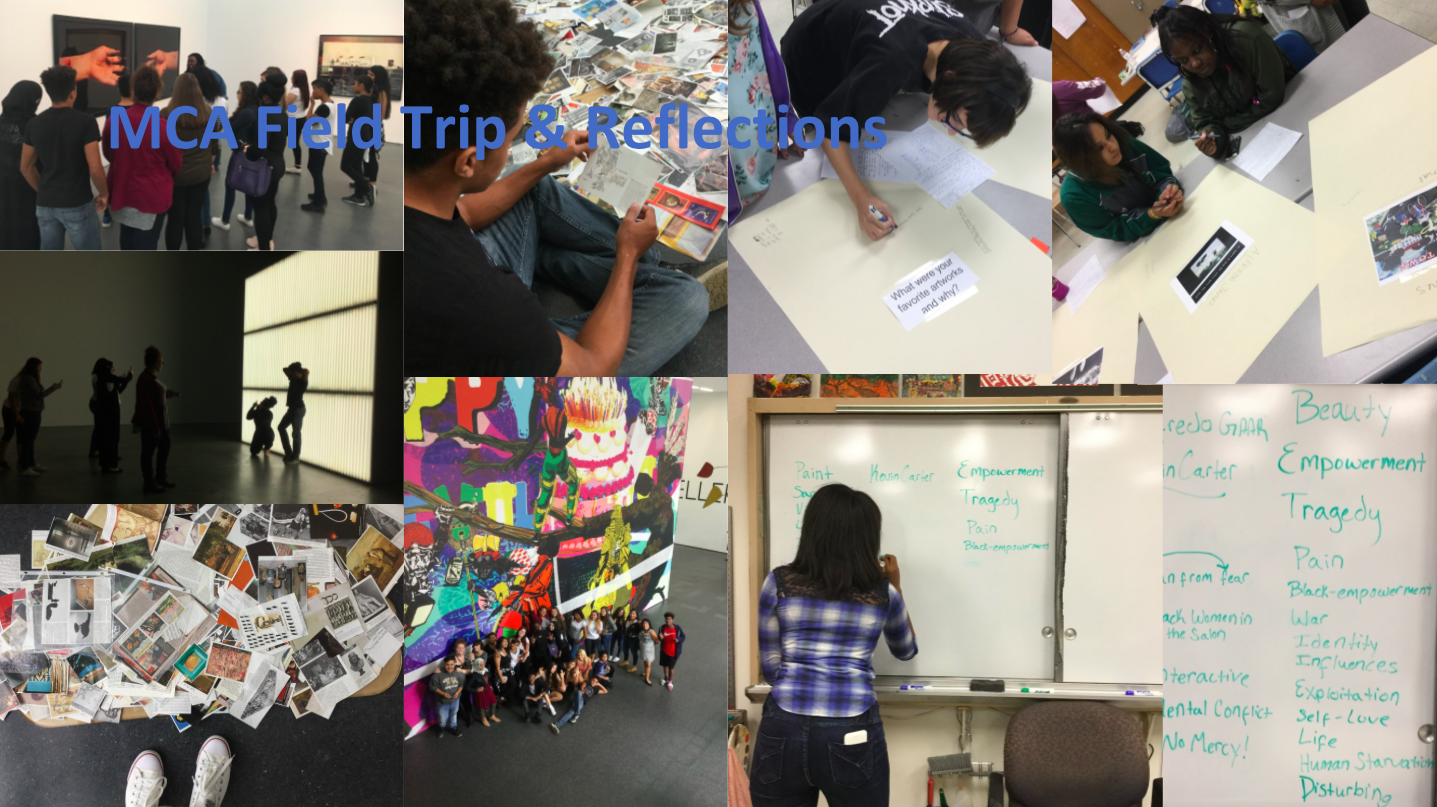
Goals and Objectives
- Students will be able to lead their own process of identifying a social issue that matters to them.
- Students will research and teach one another about socially-engaged art practices and approaches, and will choose methods that appeal to their conceptual goals.
- Students will be able to create a work of participatory art that engages the wider school community in conversation about a social issue of great importance to them.
Guiding Questions
- How does artmaking contribute to the awareness and understanding of your life and your community?
- How can we activate a space for difficult conversations?
- What is our community? What are some problems in our community?
- What can we do to raise awareness/ consciousness of these problems, such as by using these protest methods?
- What is the most important part of the chosen artists’ work that becomes a persuasive argument?

Documentation + Assessment
Throughout the project, we used the following documentation and assessment strategies
- Student documentation with cell phones
- Teacher documentation of final products and processes
- Note: Throughout the project, students were able to document the process and final products. This was our first year utilizing the iPads in the classroom, so I set up a Google Drive to collect images along the way.
Learning Activities
Step 1
Pre-project Mindmapping
Students examine their current relationship with school, their idealistic dreams for school, and the community’s understanding of school. Students gather their responses throughout the discussions and group them together into a collaborative map. Students also explore relationships between the themes, placing similiar themes closer together and different themes further away from each other.
Step 2
Rebranding the School
With the students’ ideal school in mind, we created a “rebrand” of the school. They could do this as an entire class theme, or as individuals. They could create new architecture, t-shirt designs, logos, sculptures, equipped classrooms, student events, revisions of a specific space (stadium, theatre, etc.) — whatever they could contribute to the ideal school that keeps in mind the discussion points from the map.
Step 3
Gleaning Contemporary Themes from Contemporary Art
I offered students a selection of prints by a number of contemporary printmakers who work with social justice topics. Students grouped works by “themes” and discussed the difference between subject matter and content. Student themes then became the guiding main points to drive our design work.
Step 4
Messing with Images
I led students in creating mixed media collages by combining, removing, adding, and layering to experiment with juxtaposing ideas and creating effective formal compositions.
Step 5
Crafting a Unified Print
Using collage sketches as references, students then created an original linoleum block print that reflected a contemporary social issue important to them.
Step 6
Socially-engaged Protest Art
I introduced a range of examples of socially engaged artwork relating to the idea of protest.
Step 7
Digging Deeper: Student Research and Resource Pooling
The students researched an artist who focuses on protest, and educated the class about the artist by presenting a summary of the work and a personal interpretation of how this artist's style could be used to talk about a subject meaningful to them. For example, if the student researched an artist who created a popup photography booth as their artistic strategy, the student could come up with a way that a popup photography booth could be used at their school to discuss a personal topic of their choice.
Step 8
Collecting Student Responses: Collective Storytelling
Based on our conversations about public artists who focus on social justice, the students decided that they wanted to continue their work by collecting students’ responses and making artwork from that. During after-school and homeroom meetings, they collected stories from other students anonymously, asking What was your favorite moment? What was your worst moment? and What is something you learned from?.
Step 9
The Participatory Installation: Collective Storytelling
Ask students to work together to create a work of socially-engaged art in the school. Support their work by offering very specific parameters, for example:
- Must be socially-engaged
- Stay close to the original topic
- Installed in Hallway
- Created within a 2-week time period
Students created typographic work using the collective storytelling responses they gathered from the student body.
Step 10
Reflection
What happened when we presented our work to the community? What did we learn about the opinions of others? What surprises arose during the course of creating the work, and during the interactive period? How would we advise other students who wanted to share their ideas through socially-engaged art?
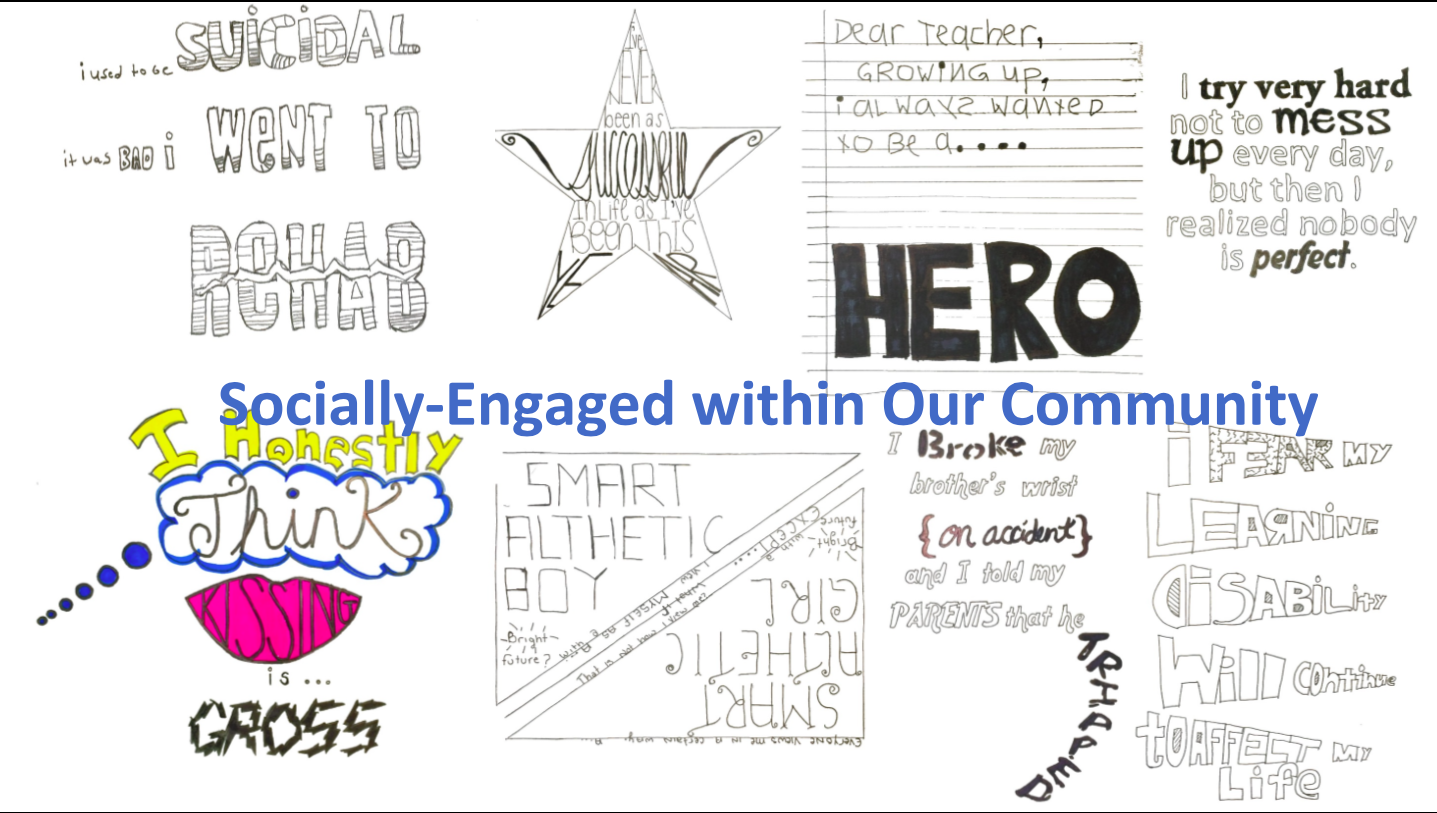
Materials
- Paper and markers
- Collage materials
- Linoleum block-cutting materials
- Found materials or larger-scale sculpture materials for installation work
- Cameras for documenting the process
MCA Connections
Works of significance during the MCA field trip emphasized different modes of protest:
- Alfredo Jaar, The Sound of Silence (2006) and Witness (2017 MCA exhibit), for discussing the ways he told this story
- The Propeller Group, Television Commercial for Communism (“This is The New Communism” Ads, 2011) for discussing how to talk about content in humorous and/or satirical ways
- Kerry James Marshall, Baobab Ensemble (2003), for discussing how to create a shared installation space
- Glenn Ligon, Runaways (1993), for discussing identity and race
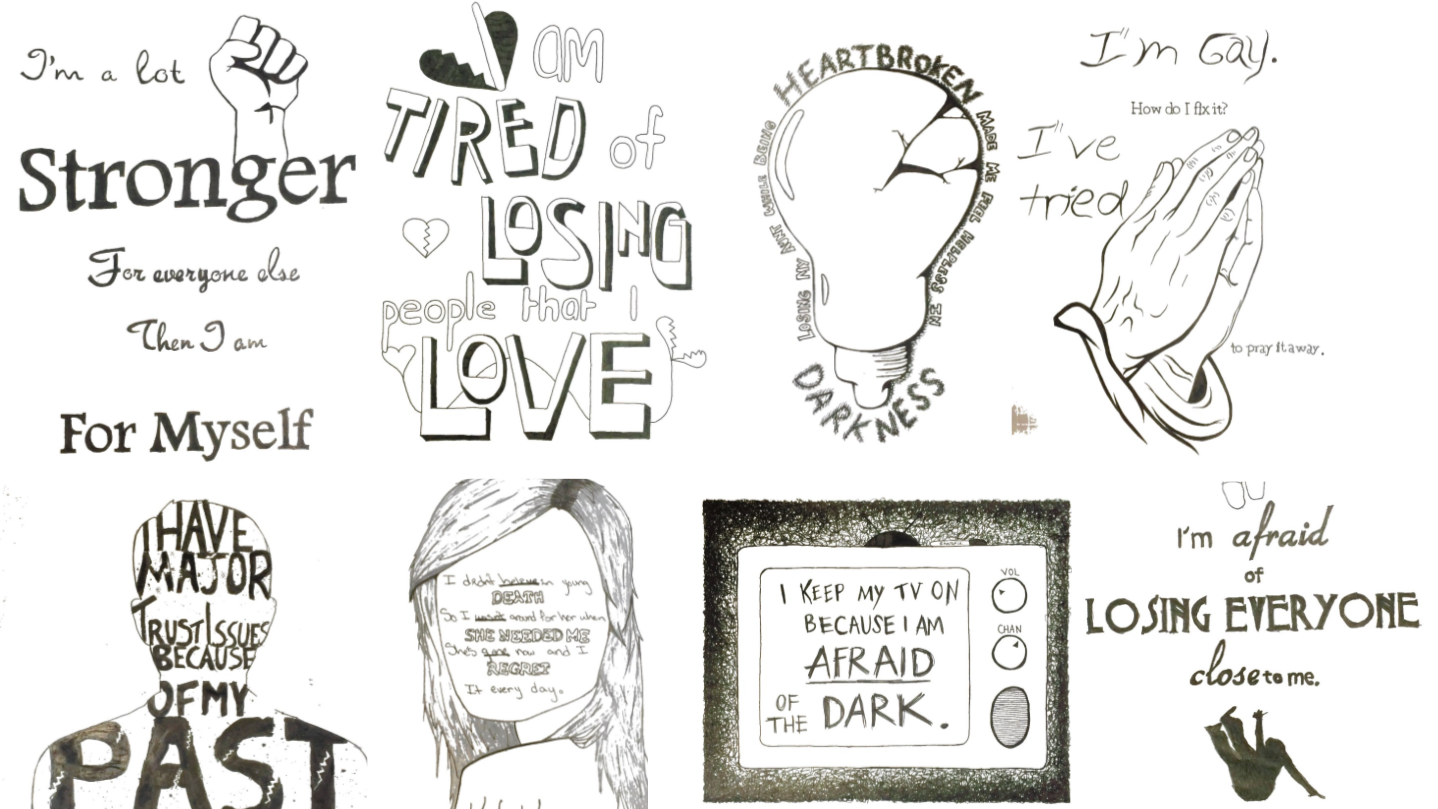
References + Resources
Michelle Richardella
Harold L. Richards High School
Michelle Richardella is an interdisciplinary artist, educator, and community organizer. She is currently an art educator at Harold L. Richards High School. Her teaching experience ranges from the alternative school setting, to the general education classroom, to community programming and museum education. She earned her BA in Education and Visual Arts at St. Xavier University and recently completed her MA in Interdisciplinary Arts at Columbia College Chicago.
Michelle is dedicated to changing the art education curriculum in schools into something that is relevant, purposeful, and empowering to this younger generation. Some of her previous experiences with socially engaged art practices are in national projects like The Memory Project, One Million Bones, and Umbrellas for Peace, but also in creating local murals in the Morgan Park, Oak Lawn, and Calumet Park neighborhoods. She joined the MCA Teacher Institute to expand these experiences into developing her own unique curriculum of socially engaged art.
Michelle reflects on her process
I learned to actively listen throughout the process of discovering our project. I had a vision of where I’d like our project to go, but listening to my students helped me direct the project into a more meaningful experience for them. They felt ownership in the process and learned much more by being part of the construction of the project. Students were able to teach the larger student community about the value of the arts as a way of connecting us all. I can imagine this project expanding far beyond my initial vision, which made it so much more valuable for me as an educator.
